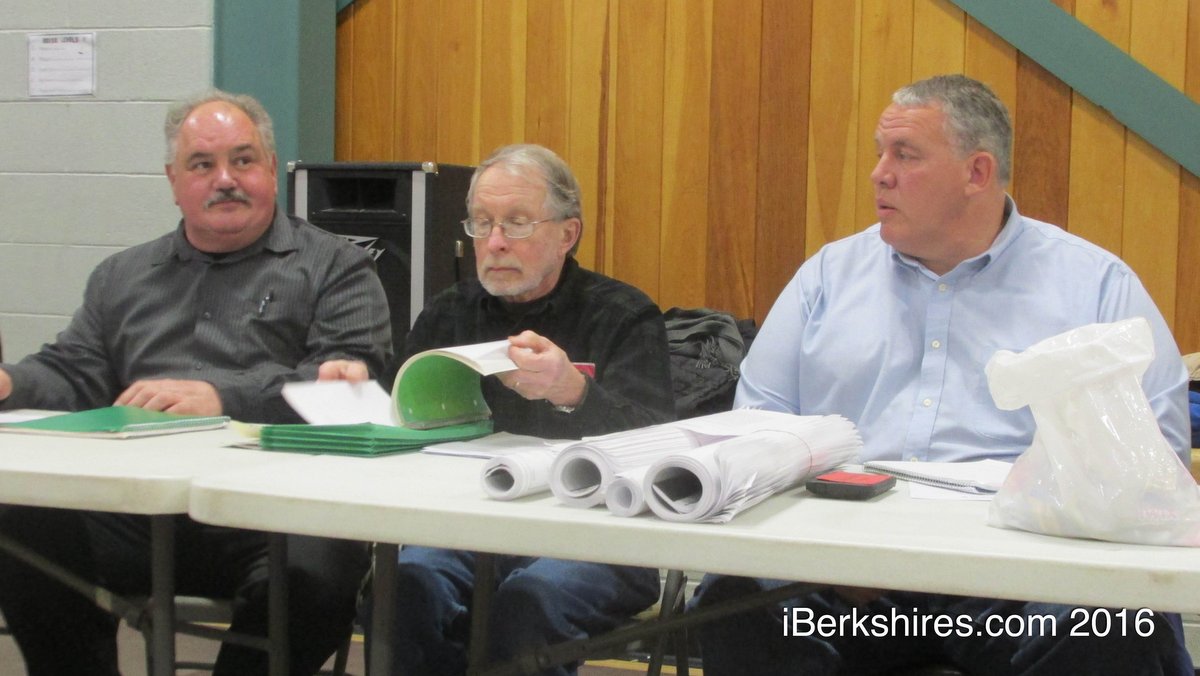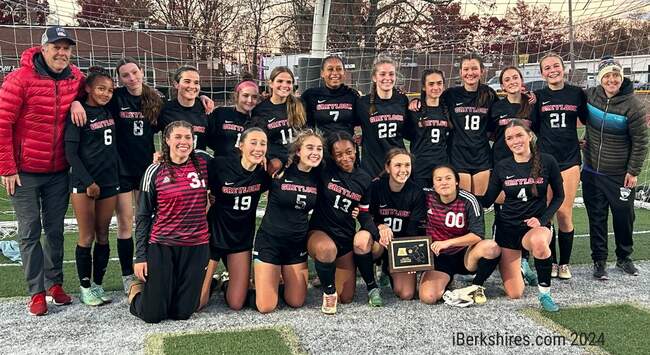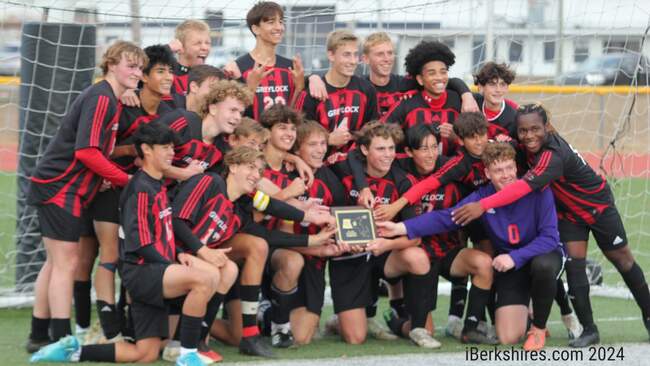
Lanesborough Voters Debate Wisdom of High School Project
 |
LANES BOROUGH, Mass — A combative special town meeting on Tuesday rehashed decades-old animosities and looked ahead to a momentous vote scheduled for March 15 on the Mount Greylock Regional School building project.
With considerable aplomb, Moderator Robert Reilly shepherded a more than three-hour debate punctuated by conflicting sets of "facts," personal attacks, catcalls and bursts of applause.
And when it was over, no decision was made and no one on either side expressed an inclination to change their opinion on the $64.8 million addition/renovation project.
In two weeks, the town's voters will be asked to OK the approximate $10.6 million town share of the project. Mount Greylock's other member town, Williamstown, will hold a parallel vote on March 1 in regard to the estimated $22.3 million share that town would incur. The rest of the $64.8 million price tag — about half — would be paid by the Massachusetts School Building Authority.
Tuesday's meeting, which also included a brief discussion and vote authorizing the Board of Selectmen to negotiate a land acquisition to facilitate a bridge project, really got going when Mount Greylock School Building Committee Mark Shiek walked the audience through the project.
Shiek covered much of the same ground he discussed in a Feb. 11 public presentation at Williamstown Elementary School, putting heavy emphasis on the economics of the project. If approved, the project would add between $353 and $393 to the tax bill of an average home in Lanesborough. It would add between $505 and $750 per year on an average tax bill in Williamstown.
The reason those numbers are still a range is that the district cannot be sure the MSBA will reimburse all of the costs planners project the state agency will bear.
The reason Williamstown, which would pay two-thirds of the local share, will have less than double the hike in the average tax bill is because it has a larger tax base across which to spread the burden.
Some in Lanesborough — including several elected town officials — contend that Williamstown and, more specifically, Williams College is not paying its fair share for the building project.
That was a major theme for one of the more contentious speakers, Finance Committee member Ray Jones.
Jones cast himself as the voice of the opposition after Shiek's lengthy explanation of the project.
The Fin Comm member opened by musing about Abraham Lincoln (forgetting, perhaps, that Lincoln was a former Whig who favored internal improvements and signed the Morrill Act creating the nation's Land Grant colleges and universities).
He then hurled an attack on the district's former superintendent, drawing — not for the last time — Reilly's ire.
Jones next questioned the validity of Mount Greylock's educational program, relying on a 2006 2016 Harvard study that challenged the value of Advanced Placement courses. Jones' point was that the AP classes are one of Mount Greylock's justifications for maintaining a high student population through school choice and tuition.
School choice and tuition have been a favorite target for the school district's critics the last few years.
Jones mocked Mount Greylock's plan to build a school for a student population of 535 students in Grades 7 through 12.
"At St. Joseph, there are only 105 students in the entire school," Jones said of his alma mater, citing the number of St. Joe students who matriculate to quality colleges and universities. "I talked to Lenox. There are only 219 students in the high school. It's amazing they can provide such an educational experience."
But Jones' chief target was Williams. First he thanked the college for its recent commitment to donate $5 million for infrastructure at Mount Greylock. Then he cited figures from the website endowments.com that peg Williams' endowment at $2.3 billion.
"Five million dollars is nothing to Williams, nothing," Jones said. "They're not going to miss their $5 million. May I suggest that if Williams was not tax exempt, as they are, they would not have as much to put into their endowment."
Jones' point on Williams College was supported by Board of Selectmen Chairman John Goerlach, who argued that Lanesborough should formally ask Williamstown to enter into a payment in lieu of taxes agreement with the college.
Jones' colleague on the Finance Committee, Al Terranova, was quick to challenge that notion.
"The PILOT program is out," said Terranova, who chairs the Fin Comm. "We brought that up. Williamstown said, 'No, Williams does enough for us.' It's a non-starter. You know what Williams has? They've got a student advisory committee, a faculty advisory committee, and they're saying to [the administration], 'Why are you giving $1 million to Mount Greylock? Give it to us and cut our tuition."
And the college's existing in-kind contributions to the local public schools were noted by resident Kathleen Flynn-Kasuba, who addressed the meeting from the floor.
"Mr. Moderator … I would like to say that Williams College owes us nothing," Flynn-Kasuba said. "My kids and many other kids from Lanesborough benefited from what Williams College has to offer. In the elementary school, they attended science programs. They took AP chemistry at Williams and maybe biology, too, I'm not sure.
"My kids and many other kids from Lanesborough benefited from that. Williams College owes us nothing. I'm very grateful for the [$5 million] gift they've given us."
While Jones attacked the school building project for projecting too high an enrollment, former Lanesborough Elementary School Committee member Robert Barton argued the district should be planning for significantly more students.
Barton cited the Berkshire County Education Task Force, which he said will lead to school closures and consolidation. And if that happens, Mount Greylock's enrollment might grow as high as 750 students.
Mount Greylock teacher Lyndon Moors, who serves on the School Building Committee, laughed off Barton's vision for the future of North County education.

"Closing Drury High School? That's going to be a surprise to residents of North Adams," Moors joked. "That is a pipe dream. It's not going to happen."
Mount Greylock School Committee Chairwoman Carolyn Greene also countered Barton's assertions. Greene, who serves on the task force, said she specifically asked her colleagues on the group if the district should put its building project on hold.
"To a person, the response was 'Keep going. You will never get back in [the MSBA pipeline]," Greene said.
That notion of a sense of urgency to stay in the MSBA process was a recurring theme for building project proponents.
"We have already had this project approved by MSBA," Greene said, referring to calls to scale down the project or build a cheaper building. "If we want to choose a different plan, if we want time to think things over and do things differently … They're happy to give the money to someone else."
Mount Greylock spent six years attempting to get into the MSBA's funding program and the last two years generating the project that the authority approved last month. School officials have repeatedly noted that a failure to move forward at this point means going to the back of the line.
"The MSBA has a very competitive process," Shiek said. "They get about 100 [statements of interest] per year, and they weed that down to five or 10, depending on how much money is available and the size of the projects.
"It took us 10 years to get to this point. The process does start to move quickly because the MSBA wants us to move quickly at this point. They have money to spend, and if we're not ready to spend it, they'll find somebody else."
Tuesday's meeting was attended by 148 voters of the 2,300 currently registered in the town, a turnout of about 6.4 percent.
Tags: MGRHS school project, special town meeting,
















